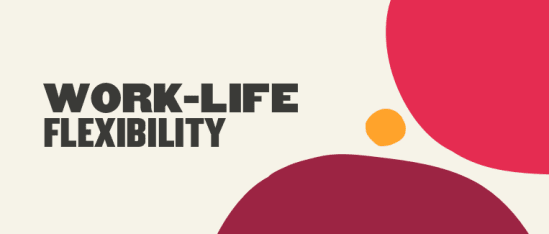Were you thrilled to start working from home?
I wasn’t. I missed my team, I missed my desk, I missed sitting on the deck outside with a coffee and a coworker. Even though I’d worked from home full-time for years before joining HiBob, I still preferred grabbing teammates for a quick chat or whiteboard sessions. But COVID didn’t ask me before it whipped through the world, so for your safety and mine I moved back into my home office.
After a few weeks of finding my footing, I remembered what I loved about working from home: workplace flexibility. While there are (valid) concerns about work-life balance while WFH, it accommodates a flexible schedule that in-office work can’t.
Let’s go into the two important elements of flexibility in the workplace: time management and location.
Time management while WFH
The eight-hour workday is dead. There, we said it.
Rare is the office, however, whose employees don’t stick around for the typical 9-5—if not longer. But more hours don’t mean increased productivity: instead, you’re looking at increased stress and burnout.
For people who find offices distracting or who have trouble sticking to a perfect 9-5, working from home can provide the flexible work schedule they need for ultimate productivity. A study by flexible jobs platform FlexJobs found that 62% of respondents left or considered leaving a job because of a lack of workplace flexibility.
Flexible time management accommodates both for one-time needs, like a doctor’s appointment, and recurring responsibilities, like being a caretaker for a loved one. A study on the impact of flexible work schedules on work-life balance published by the American Journal of Industrial and Business Management found that flexible work hours benefit both employers and employees by reducing stress on the employee, helping them stay motivated, loyal, and productive.
Recognizing the importance of non-work commitments that may overlap with traditional work hours honors the employee as a whole person: someone who importance goes beyond their contributions in the 9-5.
Long commute? No thanks.
It’s not just you: commuting is a bummer. In fact, a study conducted by the American Journal of Preventative Medicine shows that even a ten-mile (16 km) commute contributes to a higher risk for high blood pressure than shorter commutes or no commute. A similar report by the Royal Society for Preventative Health reports that commuters spend an average of 56 minutes traveling to work each day—robbing them of valuable time for exercise, cooking, and sleeping.
And cities? They’re expensive! It’s easy, especially in tech, to get trapped in the cycle of needing to make a nice salary to pay rent for an apartment that’s absurdly expensive but is close to where you work. Flexible and remote-first workplaces give you a way out of this cycle: by allowing you to live where you’re happy. The rise of remote and distributed teams means we’re looking at a flexible work-world where no one will have to choose between community and career.
Flexibility in the workplace—an environment where employees can work from home full-time, or at least frequently—allows them to take control of their lives: their commutes, their home bases, and their work-life balance.
Recommended For Further Reading
Workplace flexibility allows employees to control their own destinies
Want employees who are engaged, loyal, and excited to come to work?
Give them the flexibility they need. Creating a flexible workplace gives your employees the ability to combine their lives and their work lives: leading to not just work-life balance but, even better, work-life integration.


